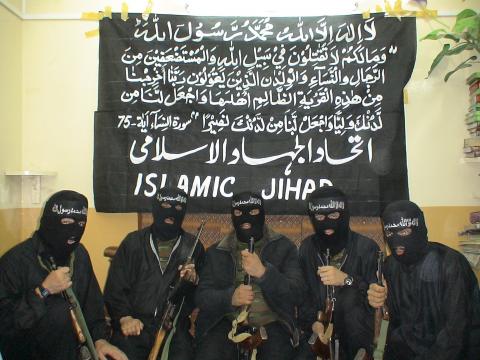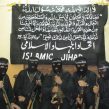
The Rise and Fall of the Islamic Jihad Union: What Next for Uzbek Terror Networks?
Publication: Terrorism Monitor Volume: 8 Issue: 14
By:

On March 4, a Dusseldorf judge convicted four men for their involvement in a plot to unleash a series of bomb attacks against U.S. army facilities in Germany. Fritz Gelowicz and Daniel Schneider, both German converts to Islam, and Adem Yilmaz and Attila Selek, both Turkish citizens, were popularly referred to as the “Sauerland cell,” part of a larger group known as the Islamic Jihad Union (IJU). Some of the men in the Sauerland Cell were reported to have trained in camps in Waziristan, along the Pakistan-Afghanistan border. U.S. and German security agencies uncovered the plot, arresting three of the men in Medebach-Oberschledorn, Germany, in September 2007 (Der Spiegel, December 8, 2009). The fourth man, Attila Selek, was apprehended by Turkish authorities in Konya in November 2007 (Der Spiegel, November 15, 2007). Selek was then extradited to Germany to stand trial for his role in the bomb plot.
The Uzbek Militants in Waziristan
Roughly nine months before the German court ruling, Pakistani forces launched a counter-insurgency operation to suppress the activities of pro-Taliban militants, including Uzbek affiliates, in the Federally Administered Tribal Areas (FATA) of North and South Waziristan and in the North-West Frontier Province (NWFP). The tribal areas bordering Pakistan and Afghanistan have become known as a haven for radical groups, playing host to pro-Taliban and al-Qaeda fighters. The patronage of local tribal groups in these two provinces allowed remnants of the Islamic Movement of Uzbekistan (IMU), under the control of Tahir Yuldashev, and the IJU splinter group to gain a foothold in the region. Uzbek militants, sheltered by Sirajuddin Haqqani, attended a rudimentary training camp at Mir Ali in Waziristan and continued to play a key role in the intricate relationships between the remnants of al-Qaeda and the Afghan and Pakistani Taliban. As part of an alliance between the powerful Haqqani network and associates of Baitullah Mahsud’s Tehrik-e-Taliban Pakistan (TTP), these groups extended their influence in tribal areas made up of a mosaic of different ethnic and sub-ethnic tribal communities. The growing influence of the alliance masked infighting between different tribal factions in 2004 and afterwards. According to local reports, some Waziri groups led by Mauvli Nazir were unhappy with the presence of “foreign” Uzbek groups in parts of FATA in 2007 (Dawn, April 11, 2007). An agreement could not be reached and this forced Yuldashev to relocate to another part of Waziristan. However, the infighting continued, prompted partly by Pakistani efforts to exploit the friction between the two Uzbek factions (the IMU and IJU) and local tribal groups, which eventually spilled out into attacks against Pakistani forces in 2008. In response, the Pakistani authorities launched a major counter-insurgency operation—targeting Mahsud’s network—in order to dislodge Islamist groups that had encroached into the SWAT valley.
The Toar Tander-I counter-insurgency operation in the tribal areas was launched in April 2009. This operation, together with Operation Rah-i-Rast (launched in May), gained renewed momentum throughout the summer months. Initially the army sought to build on the success of U.S. drone attacks and counter a deadly wave of terrorism that had inflicted large casualties in Pakistani cities. Throughout the latter part of 2008 and 2009, the U.S. authorities had turned increasingly to the use of drone strikes to eliminate the leadership of al-Qaeda and members of pro-Taliban groups in the tribal belt between Pakistan and Afghanistan. This policy led to the death of a number of key al-Qaeda members and their supporters, such as Baitullah Mahsud, who was killed in August 2009. Little more than three weeks after the death of Mahsud, a missile strike was launched on August 27 against a group of Islamists in the village of Kanigoram in Waziristan. Reports slowly emerged that one of the dead men may have been IMU leader Tahir Yuldashev, known in local circles as Qari Farooq (Dawn, October 2, 2009). TTP spokesman Qari Hussain indicated that Yuldashev had not been killed, a point reiterated by an IMU spokesman (Ferghana.ru, October 4, 2009). Nevertheless, it is now believed that Yuldashev died in the missile strike.
A statement issued shortly after the drone strike by a spokesperson for the IMU reported that Uzbek fighters had been engaged in four months of “severe fighting” in four northern provinces of Afghanistan. The spokesman stated that operations were taking place in both Afghanistan and Pakistan, but the ranks of the IMU were being filled on a “daily basis by new volunteers" (Ferghana.ru, October 4, 2009).
The Formation of the Islamic Jihad Union
About ten years earlier the IMU – an Uzbek guerrilla group which numbered around two to three hundred fighters and their families – moved from Tajikistan, where it had played a role in support of the late Mirzo Zivoev and the United Tajik Opposition (UTO) in the 1992-1997 Tajik Civil War. The IMU – led militarily by Juma Namangan and ideologically by Tahir Yuldashev – was comprised of Uzbek fighters who opposed the regime of President Islam Karimov in Uzbekistan. The IMU was hosted by the Taliban and by early 2001, Namangan, a former Soviet paratrooper, led a unit of non-Afghan volunteers that fought alongside al-Qaeda and the Taliban. Namangan died, along with a considerable number of IMU fighters in the fighting soon after the U.S. invasion. Others fleeing the U.S. onslaught were killed in the Shah-i-Kot valley, bordering Pakistan, as Yuldashev and the remaining members of the IMU sought refuge in the tribal regions on the Afghan-Pakistan border. Yuldashev took over the sole leadership of the IMU in 2002. Differences emerged between the remaining Uzbek volunteers, leading to the creation of the IJU splinter group.
The IJU formed around a small core of people led by two Uzbeks, Najmiddin Jalolov (a.k.a. Abu Yahya Muhammad Fatih) and Suhayl Buranov (a.k.a. Abu Huzaifa). The network sought to unite a host of sub-ethnic groups through their shared common Turkic heritage. It had support in the hierarchy of al-Qaeda, but also drew on the different non-Uzbek ethnic groups from the Caucasus, Central Asia and the Greater Middle East all of whom spoke a cluster of closely related languages (Turkish, Azeri, Uzbek, Turkmen, Tatar and Uyghur). While it remained a fringe network and off-shoot of the IMU, it had a desired aim of continuing attacks against the Karimov regime, which Najmiddin Jalolov reiterated in a statement released through the IJU’s Islamist web portal (Sehadet Zanami, May 31, 2007). The IJU were implicated in a series of attacks, including a number of suicide operations in the Uzbek capital of Tashkent in 2004 (AP, July 27, 2004). Thereafter the group remained largely underground, consolidating links to other groups and establishing small but committed support networks in the tribal belt, in Tajikistan, Uzbekistan, Turkey, and, where possible, in the Turkic speaking diaspora communities in Europe. Although it focused on radicalizing converts in Germany, which has a large Turkish population, it also sought support from radical Islamists across Central Asia.
Following the foiled plot in Germany in 2007, the IJU launched a small number of attacks in Afghanistan, including the use of a Turkish-born German convert and Turkish fighters who were involved in suicide operations directed at ISAF forces in and around the Afghan town of Khost (Sehadet Zanami, September 15, 2008). At the same time the group launched a much larger media campaign in support of its activities, publishing statements, video footage and evidence of its actions through a number of dedicated Turkish websites, parts of which were also publicized through the media wing of al-Qaeda, al–Sahab. However, after the 2007 Germany plot, European governments actively targeted clandestine cells that were said to support the IJU, leading to a series of arrests in Germany and Scandinavia. Then in April 2009, Turkish authorities launched a crackdown on groups with ties to the network. Approximately thirty five people were arrested in six different cities in Turkey. Among those arrested was the alleged Turkish representative of the IJU, as well as others who were said to be close associates (Evrensel, April 22, 2009). According to the Turkish press, members of the group had been involved in a plot to bomb NATO offices in Germany and Turkey (Star, October 16, 2009; Zaman, October 20, 2009).
In the Wake of Operation Falcon
It appears that the joint 2009 operation by Pakistani and Afghani forces, named Operation Falcon, effectively forced the Uzbek militants – the IMU and their associates – to move across the tribal belt. These actions pushed Yuldashev and his supporters into the northern FATA regions by August 2009, with coordinated operations by German-led ISAF and Afghan troops in the Kunduz region, effectively cutting off escape routes for the IMU and IJU, who had a foothold in Kanigoram and Mir Ali. The targeting of the IJU led to sporadic attacks across Central Asia, with the movement claiming responsibility for the May 2009 attacks in the Andijan region of Uzbekistan and Uzbek fighters being implicated in attacks in Tajikistan in late 2009 (RFE/RL, July 23, 2009; May 27, 2009). Other reports late last year indicate that the IMU had to move its remaining fighters to the strategically important border area near Tajikistan and Uzbekistan, following orders from the Taliban leadership, and in response to the coordinated offensive in the tribal belt (Ferghana.ru, September 18, 2009).
After the death of Yuldashev, various reports indicated that an Uzbek militant, Usman Jan, or an ethnic Tatar named Zubair ibn Abdurakhman had taken over the leadership of the IMU (Dawn, October 3, 2009; Ferghana.ru, September 29, 2009). Though much smaller in numbers, the IJU has also suffered as a result of U.S. drone attacks and the coordinated and concerted pressure of Afghan, Pakistani and ISAF forces. Reports emerged that Najmiddin Jalolov was killed in a U.S. drone strike in October 2009 while suspected members of the IJU have been arrested in Europe in recent months (Ferghana.ru, October 9, 2009; Dawn, February 22). Remaining members of the IJU and IMU appear to have attempted to slip through the Coalition cordon in the Kunduz region and may regroup in the coming months. Nonetheless, the arrests in Turkey and Germany and the sustained military campaign appear to have had the short term effect of severely damaging the capability of both the IMU and the IJU.





